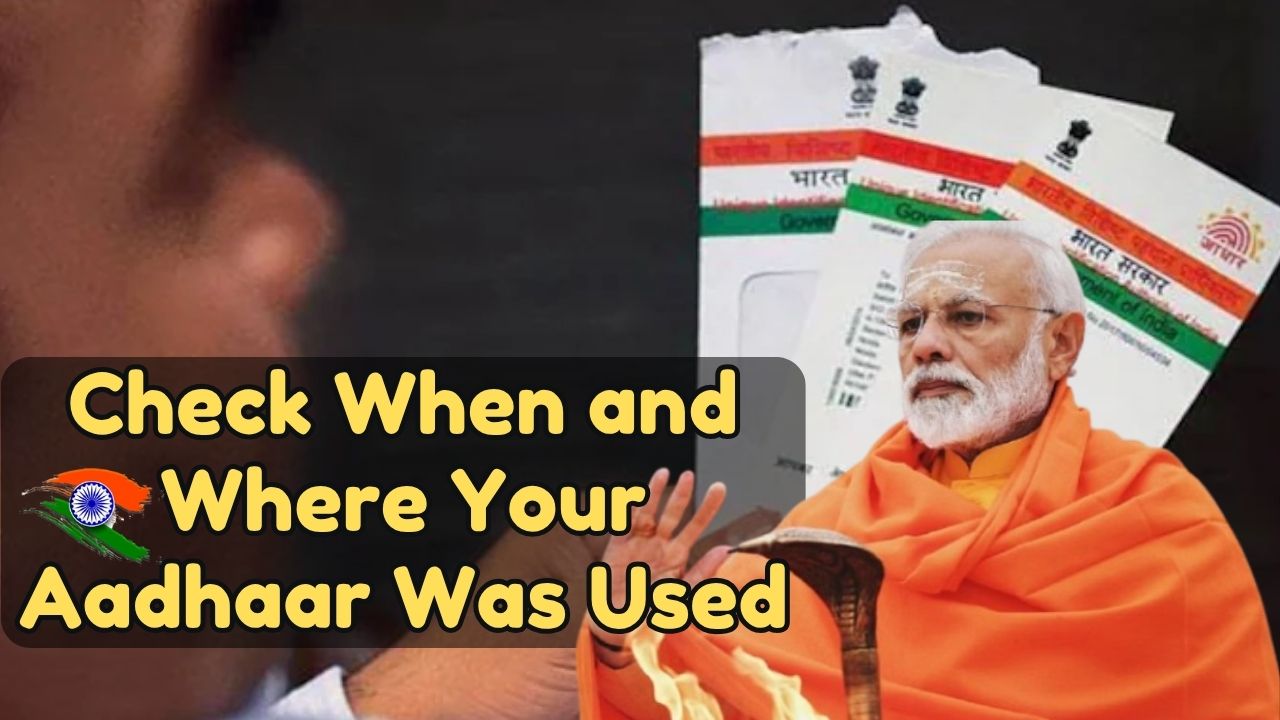Aadhaar has become one of the most widely used identification documents in India. From banking and telecom to government subsidies and digital signatures, almost every important service relies on Aadhaar authentication. With Aadhaar being used so frequently, the risk of unauthorized access or misuse also increases. Many citizens are unaware of when, where, and for what purpose their Aadhaar number was used. To ensure transparency and security, UIDAI provides a powerful feature known as Aadhaar Authentication History.
This feature allows every Aadhaar holder to check all authentication activities performed using their Aadhaar number in the last six months. It helps citizens monitor their identity usage and report any suspicious activity immediately. Below is a detailed guide explaining what this feature is, why it is needed, and how to use it effectively.
Why Aadhaar Authentication History Is Important
Aadhaar is widely used as a primary identity proof across both government and private sectors. It plays a major role in verification processes for numerous services, including:
- Banking and financial services
- eKYC for SIM cards
- Government subsidies and benefits
- Opening accounts on digital platforms
- Applying for loans
- Digital signatures and online verifications
Due to such widespread usage, the chances of Aadhaar being misused without the holder’s knowledge cannot be ignored. Unauthorized authentication attempts can pose serious threats to personal data and financial security. UIDAI’s authentication history helps users track all activities where Aadhaar credentials were used.
The history log includes the date, time, authentication type, and the agency that initiated the request. This allows individuals to confirm whether each verification was done by them or not. If any unknown entry appears, immediate action can be taken to avoid further misuse.
Summary Table
Details |
Information |
|---|---|
Feature Name |
Aadhaar Authentication History |
Purpose |
To check when and where Aadhaar was used for verification |
Time Period Covered |
Last six months |
Requirements |
Aadhaar number or Virtual ID and linked mobile number |
Official Website |
What You Need to Check Aadhaar Authentication History
To access the Aadhaar authentication history feature, the following requirements must be met:
1. Valid Aadhaar Number or Virtual ID
Users can enter their 12 digit Aadhaar number or the 16 digit Virtual ID generated through UIDAI services.
2. Mobile Number Linked with Aadhaar
An active mobile number registered with UIDAI is mandatory. The system sends an OTP for authentication, ensuring only the owner can access history details.
3. Stable Internet Connection
Since the feature is online, users need a device with internet access to visit UIDAI’s official website or the mAadhaar app.
It is important to note that authentication history cannot be accessed using an unlinked or inactive mobile number for security reasons.
How to Check Aadhaar Authentication History for the Last Six Months
UIDAI has made the process simple and user friendly. Follow the steps below to view your Aadhaar authentication log:
Step 1
Visit the official UIDAI website at https://uidai.gov.in.
Step 2
Go to the section titled My Aadhaar and locate the option Aadhaar Authentication History.
Step 3
Enter your Aadhaar number or Virtual ID, then fill in the captcha code displayed on the screen.
Step 4
Click on Send OTP. A one time password will be sent to your registered mobile number.
Step 5
Enter the OTP in the designated field and proceed.
Step 6
Once the OTP is verified, a detailed list of all Aadhaar authentication activities for the past six months will appear. This list includes the date, time, type of authentication such as biometric, demographic, OTP based, and the requesting agency.
This record helps you check whether the usage was legitimate or if any entry appears suspicious or unauthorized.
What to Do If You Notice Unusual or Suspicious Activity
If any entry in the history seems unfamiliar or if you believe someone has used your Aadhaar number without your permission, immediate action is recommended. UIDAI offers multiple ways to raise concerns or file a complaint.
1. Contact UIDAI Helpline
Call the toll free number 1947 to report the issue.
2. Email UIDAI
Write to help@uidai.gov.in explaining the suspicious activity.
3. Register an Online Complaint
Use UIDAI’s online complaint portal available on their official website.
UIDAI reviews such cases and may reach out to the service provider responsible for the disputed authentication. This helps identify the source and prevent future misuse.
Additional Security Measures Recommended by UIDAI
To enhance Aadhaar security, UIDAI provides extra protection tools that citizens can use whenever needed.
1. Lock Aadhaar Biometrics
If you suspect misuse or want additional safety, you can temporarily lock your biometrics. Once locked, no one can use your fingerprint or iris data for authentication.
2. Use the mAadhaar App
The mAadhaar app allows you to manage many security features such as biometric lock, profile updates, and authentication history.
3. Keep Your Mobile Number Updated
Always ensure your registered mobile number is active so that you receive OTPs and alerts promptly.
By using these security measures, Aadhaar holders can significantly reduce the risk of unauthorized access.
FAQs
1. What is Aadhaar Authentication History?
It is a UIDAI feature that displays all Aadhaar based authentication activities performed during the last six months.
2. Can I check the history without a linked mobile number?
No. A linked mobile number is essential because OTP verification is required to access the history.
3. Does the history show which agency requested authentication?
Yes. The log displays the name or code of the agency that initiated the verification.
4. What should I do if I find an authentication I did not approve?
Immediately contact UIDAI through the helpline, email, or online complaint system.
5. Is biometric locking permanent?
No. You can temporarily lock or unlock your Aadhaar biometrics anytime through UIDAI’s website or the mAadhaar app.
For More Information Click HERE








